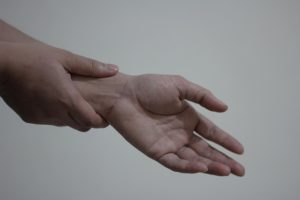Florida personal injury lawsuits are among the most commonly weighed in our state courts. To avoid overwhelming the courts, most personal injury claims settle prior to trial. Additionally, F.S. 627.737 sets a seriousness threshold has been set for recovering damages from an at-fault driver. If injuries don’t meet that threshold, then claimants will have to rely on their own personal injury protection policy issued by their own auto insurer.
A bruised arm or a scratched leg likely isn’t going to cut it. PIP provides up to $10,000 in damages for medical expenses and 60 percent of your lost wages for the time you were forced to take off work. It will also cover things like travel expenses to doctor appointments. It will not cover things like pain and suffering or loss of consortium that would be available in lawsuit.
If your injuries are more serious and $10,000 will not cover your losses, a Broward injury lawyer can review the facts and help you determine if the injuries you’ve suffered medically meet the statutory threshold.
Florida Serious Injury Threshold
PIP is considered your “primary” insurance following a crash, and it’s available regardless of fault. The downside of this is that it’s limited. $10,000 can seem like a lot at first blush, but the reality is it’s not much in the aftermath of a crash.
To pursue a personal injury lawsuit after a crash – before you can establish fault, before you can argue how much you should be paid – you need to show your injuries are serious enough.
The law breaks it down into four categories:
- Permanent or significant loss of an important bodily function.
- Significant and permanent disfigurement or scarring;
- Permanent injury, as determined within a reasonable degree of medical probability;
- Death.
The law doesn’t go into any further details about how courts should interpret this. What our Broward injury lawyers can say is that prior case law does provide some insight into which injuries meet the threshold and which do not.
Just as an example, a broken arm will likely meet the serious injury threshold. On the other hand, a sprained wrist most likely won’t, even if you’re in a lot of pain. The difference is that most broken bones will impair an important bodily function (i.e., writing, carrying, lifting, walking, etc.). It meets the first criteria, even if it’s not a permanent injury.
Different People, Same Injury, Different Serious Injury Thresholds
Our injury lawyers need to be careful to note there is no brightline rule about which injuries qualify. In fact, two different people could have the same injury and one might qualify while the other would not.
One example might be if an athlete sustains an injury like whiplash, the injury might not meet the “seriously impair” the athlete the same way it might a small child or elderly person – even though it’s the same injury.
This is why it’s important for an experienced Broward injury lawyer to carefully examine the fact pattern in your case to make a professional judgment about whether an injury is significant enough to impair a person’s life.
A defendant can always challenge the serious injury threshold. The defense can ask the court to make a determination on whether one’s injuries truly meet that threshold. If that happens, a hearing may be set, at which time both sides can present evidence, including expert witnesses who can testify as to the seriousness of your injuries and how it impacts your life.
Call Fort Lauderdale Injury Attorney Richard Ansara at (954) 761-4011. Serving Broward, Miami-Dade and Palm Beach counties.
Additional Resources:
F.S. 627.737, Serious Injury Threshold Statute
 Broward Injury Lawyer Blog
Broward Injury Lawyer Blog



